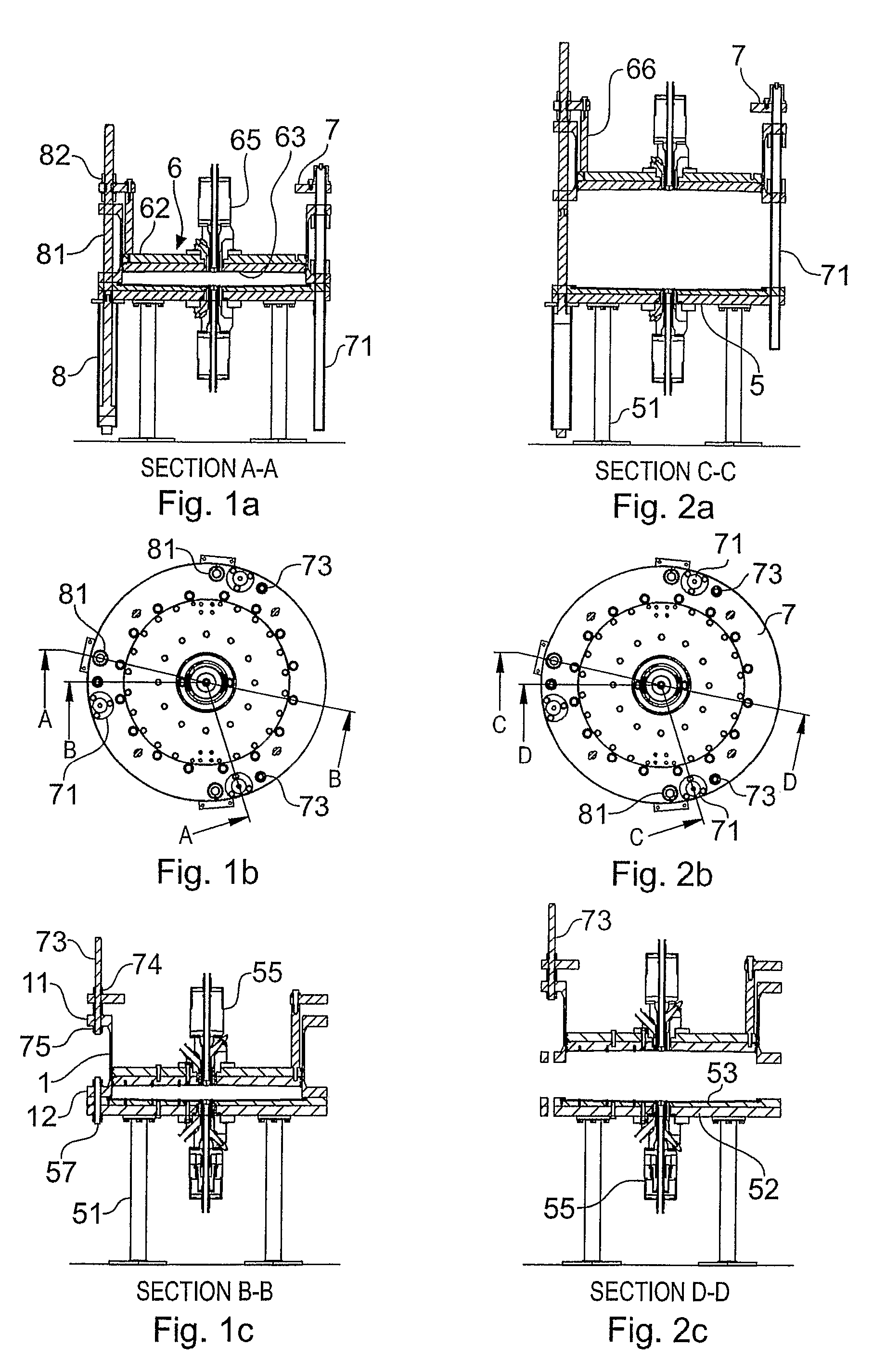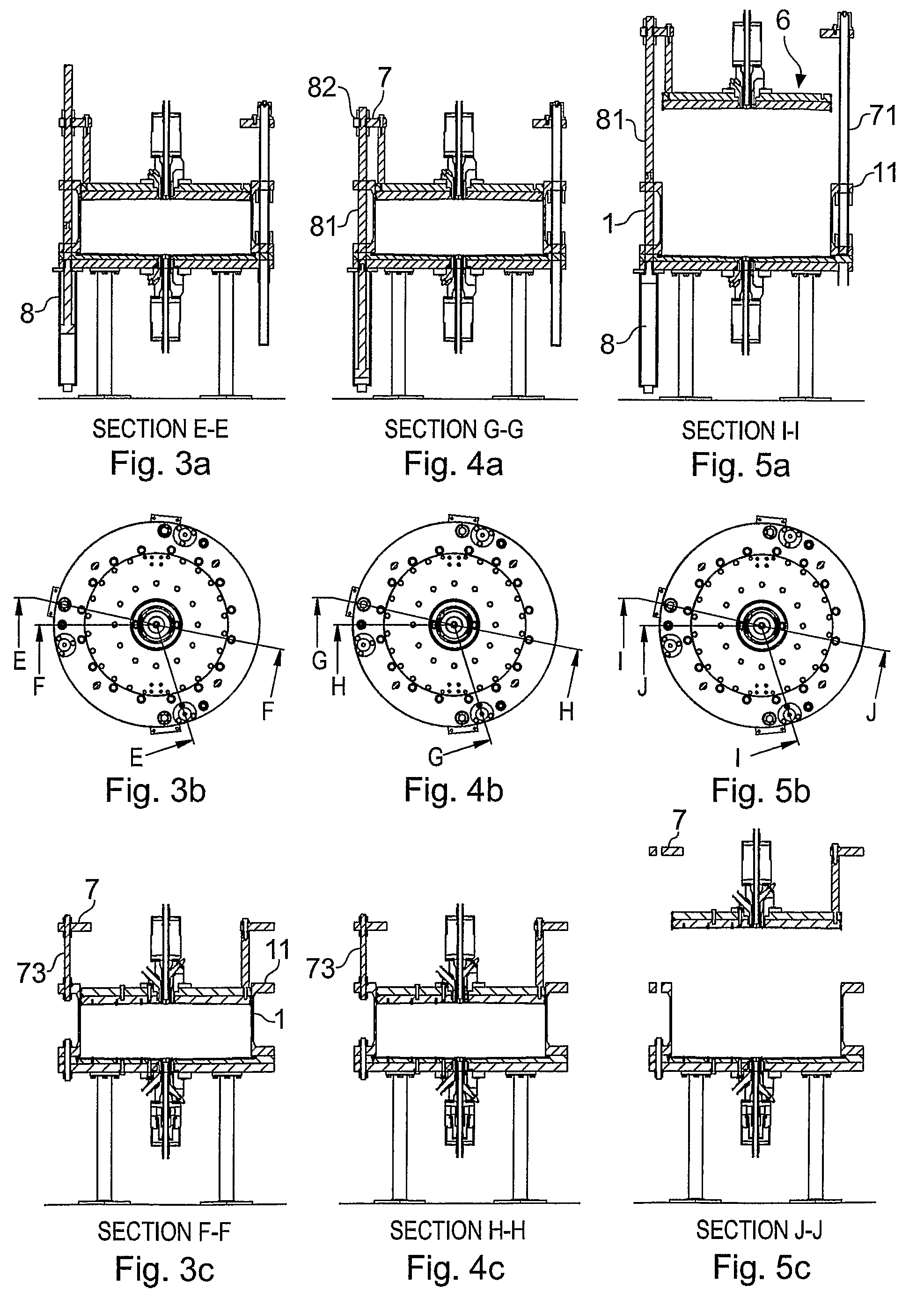Chromatography columns and their operation
a technology of chromatography and columns, applied in the direction of solid sorbent liquid separation, component separation, water/sludge/sewage treatment, etc., can solve the problems of difficult access to the upper mesh, difficult manoeuvre without a powered lift, and significant obstructions around, etc., to achieve the effect of exceeding the safe reach of the structur
- Summary
- Abstract
- Description
- Claims
- Application Information
AI Technical Summary
Benefits of technology
Problems solved by technology
Method used
Image
Examples
Embodiment Construction
[0059]The column components are broadly similar to those in FIGS. 1 to 5 discussed previously. Thus, the cylindrical stainless steel column tube 101 has upper and lower integral flanges 111, 112, and the base 105 consists of a steel backing plate 152 and a contoured cell plate 153 which carries the bed support mesh. Releasable threaded studs 157 hold the bottom column flange 112 down onto the base, clamping a fixed seal 159 described later. The column base 105 stands on support legs 151, here a wheeled mobile support, providing a component space beneath the base.
[0060]Continuing with reference to FIGS. 6 to 9, three hydraulic drive cylinders 108 are mounted to the underside of the base plate 152, and each operates a drive rod 181 extending up slidably through an opening in the base 105, a corresponding opening in the lower tube flange 112 and up to the upper flange 111. The upper flange 111 has corresponding holes, and a drive extension rod 183 has its bottom end passing through thi...
PUM
| Property | Measurement | Unit |
|---|---|---|
| diameter | aaaaa | aaaaa |
| diameter | aaaaa | aaaaa |
| internal diameter | aaaaa | aaaaa |
Abstract
Description
Claims
Application Information
 Login to View More
Login to View More - R&D
- Intellectual Property
- Life Sciences
- Materials
- Tech Scout
- Unparalleled Data Quality
- Higher Quality Content
- 60% Fewer Hallucinations
Browse by: Latest US Patents, China's latest patents, Technical Efficacy Thesaurus, Application Domain, Technology Topic, Popular Technical Reports.
© 2025 PatSnap. All rights reserved.Legal|Privacy policy|Modern Slavery Act Transparency Statement|Sitemap|About US| Contact US: help@patsnap.com



